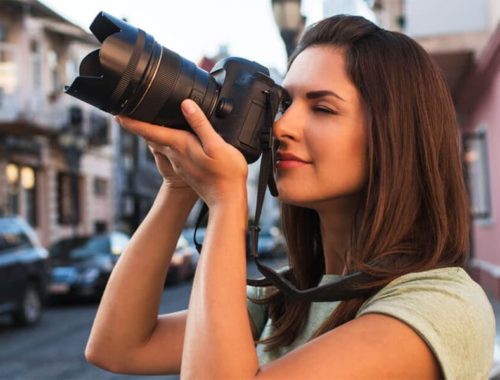Mastering Sports and Action Photography
Capturing the energy and dynamism of sports and action shots can be both thrilling and challenging. Whether you’re photographing a high-stakes game or a lively street performance, the goal is to freeze the moment and convey the intensity of the action. To help you get those jaw-dropping shots, here are some expert tips to elevate your sports and action photography game.
1. Know Your Subject
Before you even lift your camera, take some time to understand the sport or activity you’re photographing. Each sport has its own rhythm, key moments, and unique movements. For example, football has frequent bursts of action and critical moments like touchdowns or tackles, while a marathon is all about endurance and finishing. Knowing these elements will help you anticipate key moments and position yourself accordingly. How to get high-end photography clients? Check out their page to find more tips and ideas.
2. Use the Right Equipment
Sports and action photography demands specific gear to capture high-speed movements effectively. Here are some essential pieces of equipment:
- Camera Body: A camera with a fast burst rate (frames per second) and excellent autofocus capabilities is crucial. DSLRs and mirrorless cameras with high frame rates are ideal.
- Lenses: A lens with a fast aperture (like f/2.8) allows for better performance in low light and helps to isolate the subject from the background. A zoom lens with a long focal length (like 70-200mm) is often preferred for sports photography as it allows you to get close-up shots without being physically close.
- Tripod or Monopod: While a tripod might be cumbersome, a monopod can be incredibly useful for stabilizing your camera and lens during action shots, especially with heavier lenses.
3. Master the Art of Autofocus
In sports photography, autofocus is your best friend. Use continuous autofocus mode (often labeled as AI-Servo for Canon or AF-C for Nikon) to keep moving subjects sharp. You can also fine-tune your autofocus settings for better tracking and accuracy. For fast-moving subjects, consider using the AI tracking mode to keep your subject in focus as it moves across the frame.
4. Optimize Your Camera Settings
The key to successful sports photography is finding the right balance between your camera settings. Here’s a quick guide:
- Shutter Speed: To freeze motion and avoid blur, use a fast shutter speed. For fast sports like soccer or basketball, you’ll need at least 1/1000 second, but for slower movements, you can use slightly slower speeds.
- Aperture: A wide aperture (small f-number) lets in more light and helps to create a shallow depth of field, which is useful for isolating your subject from the background. However, you might need to adjust it based on the lighting conditions and desired effect.
- ISO: Increase your ISO to allow for faster shutter speeds in low-light conditions. Be cautious of going too high, as this can introduce noise into your images. Modern cameras handle high ISO settings better, but it’s always a balancing act.
5. Use Burst Mode
Burst mode (or continuous shooting mode) is essential for capturing those fleeting moments. This mode allows you to take multiple shots in rapid succession, increasing your chances of getting the perfect frame. Keep your finger on the shutter button and review your shots afterward to choose the best one.
6. Get in Position
Your position can make a huge difference in your shots. Try to get as close to the action as possible while remaining unobtrusive. For team sports, positions along the sidelines or behind the goal can offer excellent angles. For individual sports, find a spot where you can capture the athlete’s expression and movement clearly. Also, consider the background—try to avoid cluttered or distracting elements that could detract from the subject.
7. Anticipate the Action
One of the most important skills in sports photography is the ability to anticipate the action. Watch the players or performers and predict their movements based on their current actions and past experience. For instance, if a player is winding up for a shot, position yourself accordingly to capture the moment of impact.
8. Experiment with Composition
While capturing action, don’t forget about composition. Use techniques such as the rule of thirds, leading lines, and framing to create visually appealing images. Capture the emotion and intensity of the moment by focusing on expressions and body language. Also, try to include the environment and other elements that contribute to the overall story.
9. Be Prepared for the Unexpected
Sports and action photography is unpredictable, and sometimes the best shots come from unexpected moments. Stay alert and be ready to react quickly. This could be an athlete’s triumphant celebration or a sudden, dramatic turn in the game.
10. Review and Learn
After the event, take the time to review your images critically. Identify what worked well and what could be improved. Analyze your composition, focus, and timing to refine your skills for next time. Sports photography is a learning process, and each shoot will help you get better.
Conclusion
Sports and action photography is an exhilarating challenge that requires a combination of technical skills, quick reflexes, and a deep understanding of the subject. By following these tips, you can improve your chances of capturing those incredible moments of action and emotion that define the essence of the sport. So grab your camera, get out there, and start shooting—your best shots are just around the corner.
You May Also Like

Potential of Renewable Energy Sources
August 17, 2023
Learn Digital Photography Techniques
September 22, 2020


